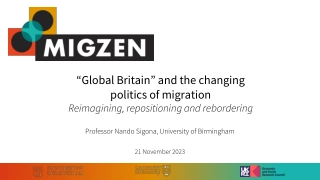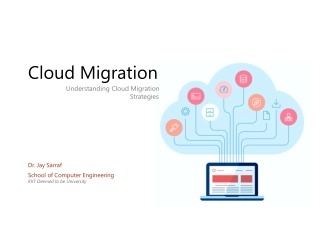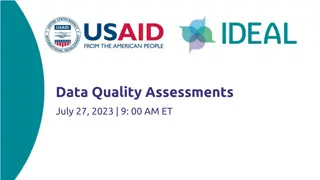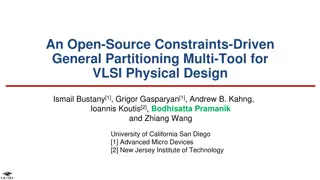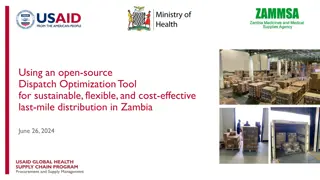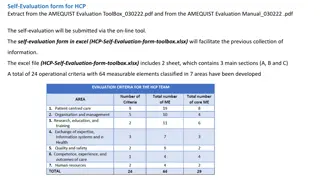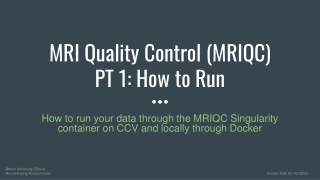The Role of Data Migration Tool in Big Data with Ask On Data
Data migration tools are indispensable for organizations looking to transform their big data into actionable insights. Ask On Data exemplifies how these tools can streamline the migration process, ensuring data integrity, scalability, and security. By leveraging Ask On Data, organizations can achieve efficient and successful big data transformation, unlocking the full potential of their data assets.
Download Presentation
Please find below an Image/Link to download the presentation.
The content on the website is provided AS IS for your information and personal use only. It may not be sold, licensed, or shared on other websites without obtaining consent from the author. Download presentation by click this link. If you encounter any issues during the download, it is possible that the publisher has removed the file from their server.
Presentation Transcript
The Role of Data Migration Tools in Big Data Transformation In today s data-driven world, organizations are constantly seeking ways to harness the power of big data to gain insights, improve decision-making, and drive innovation. One of the critical steps in this journey is data migration, which involves transferring data from various sources to a centralized data platform. Data migration tool, such as Ask On Data, play a pivotal role in ensuring that this process is efficient, secure, and accurate. This article explores how data migration tools facilitate big data transformation, highlighting the unique capabilities of Ask On Data. Understanding Big Data Transformation Big data transformation refers to the process of converting raw data from multiple sources into a structured format that can be analyzed and used for strategic purposes. This transformation is essential for extracting valuable insights and making data-driven decisions. However, the sheer volume, variety, and velocity of big data pose significant challenges in terms of data integration, quality, and processing speed. The Need for Data Migration Tools Data migration is a complex task that involves moving data from legacy systems, databases, and various other sources to a modern data platform. Manual data migration is time- consuming, error-prone, and inefficient, especially when dealing with big data. Data migration tools are useful in this situation. These tools automate the migration process, ensuring data integrity, minimizing downtime, and reducing the risk of errors. Key Features of Data Migration Tools Data migration tools, like Ask On Data, offer several features that address the challenges of big data transformation: Automated Data Mapping and Transformation: These tools automatically map data fields from the source to the target system, applying necessary transformations to ensure compatibility and consistency. This feature reduces manual effort and speeds up the migration process. Scalability: Data migration tools are designed to handle large volumes of data efficiently. They can scale up to accommodate the increasing data loads typical of big data environments. Real-Time Data Processing: Many data migration tools support real-time data processing, enabling continuous data migration without disrupting ongoing operations. Data Quality Assurance: These tools include data cleansing and validation mechanisms to ensure that the migrated data is accurate and complete. They can detect and correct errors, duplicates, and inconsistencies in the data.
Security and Compliance: Data migration tools offer robust security features to protect sensitive data during the migration process. They also ensure compliance with regulatory requirements, such as GDPR and HIPAA. How Ask On Data Facilitates Big Data Transformation Ask On Data is a leading data migration tool that provides a comprehensive solution for big data transformation. Here s how it stands out: Automated and Efficient Migration Automates the entire migration process, from data extraction to transformation and loading (ETL). Its intuitive interface allows users to easily map and transform data, ensuring a seamless transition from legacy systems to modern data platforms. Scalability and Performance Designed to handle massive datasets, Ask On Data scales effortlessly to meet the demands of big data environments. Its advanced algorithms optimize data processing, ensuring high performance and efficiency. Real-Time Monitoring and Reporting Users can monitor the migration process in real time through interactive dashboards. The tool provides detailed reports on migration status, data quality, and any issues encountered, allowing for quick resolution. Enhanced Data Security Prioritizes data security, employing encryption and other protective measures to safeguard sensitive information during migration. It also ensures compliance with industry standards and regulations. Collaboration and Flexibility Supports real-time collaboration, enabling multiple users to work together on the migration project. Its flexible architecture allows it to integrate with various data sources and platforms, making it a versatile tool for diverse data environments. Conclusion Data migration tools are indispensable for organizations looking to transform their big data into actionable insights. Ask On Data exemplifies how these tools can streamline the migration process, ensuring data integrity, scalability, and security. By leveraging Ask On Data, organizations can achieve efficient and successful big data transformation, unlocking the full potential of their data assets.







